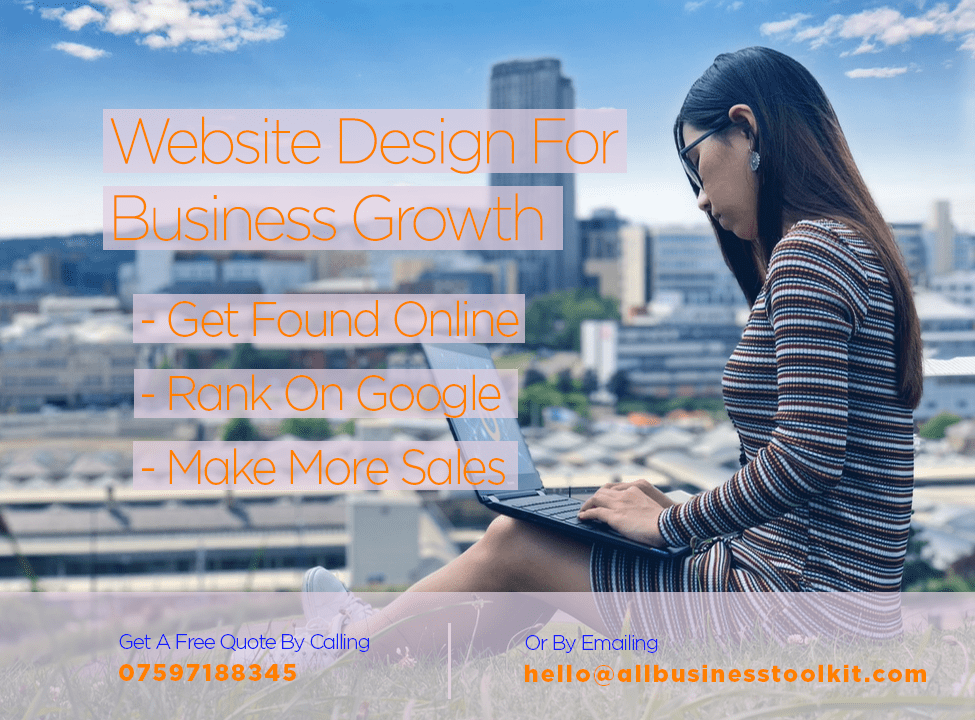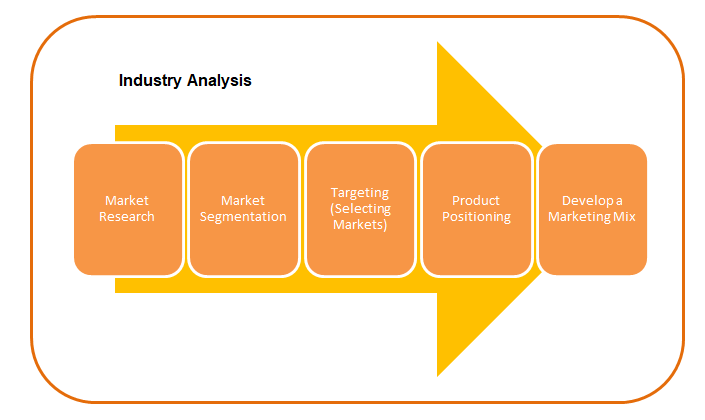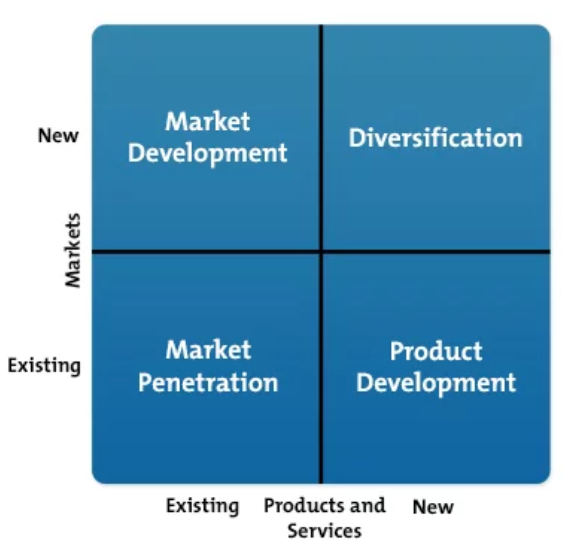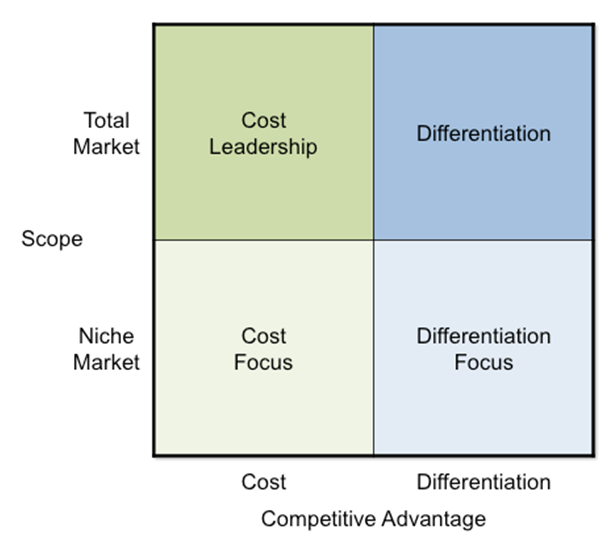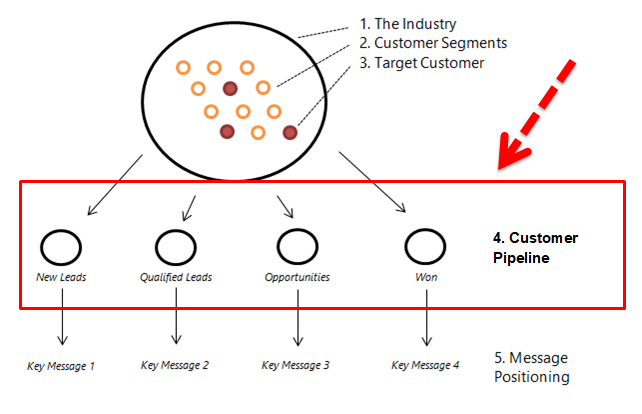Every business has competition, even if some industries are more competitive than others. Nevertheless, you do not take any chances! Even though there may be low direct competition, there is always a substitute product just waiting to steal your business away from you. By not having an effect strategic position you could be losing potential growth for your business.
Strategic positioning definition? Strategic positioning is the approach you take when entering your business into any given market. It is the fundamental decisions senior staff make to deliver a product and a brand into the market. To do so there are a number of techniques that guide your performance and leverage you ahead of the competition in your competing market.
In this article, I will take you through the top 10 tools you can apply to your business to secure growth in your business.
1. What Is Strategic Positioning?
Maybe, you want to build brand awareness, or maybe you want to focus your efforts on building better products. Strategic positioning lays the groundwork for doing these tasks.
All in all, strategic positioning is all about establishing a direction in your company vision and proactively seeking ways that vision can be met.
You want to devise a clear direction as it will provide you with a clear focus of delivering value to your customers, and do so better than the competition that surrounds you.
A successful strategic position will consider every possible context and scenario in your space.
2. Why Strategic Positioning Is Important?
The marketing environment consists of three types of companies:
- Those companies that make things happen (set the path)
- Those companies that watch things happen (try to adapt)
- Those that wonder what just happened (do not have a plan)
By having a strategic direction you can begin to assimilate making things happen. Or at least understand the environment enough to change and adapt.
With no strategic plan in place, you will be sure of being that company wondering what just happen. Which means you have already lost…
For example, after decades of success it only took HMV a few years to go into administration because of the changing landscape of consumer shopping on the internet. HMV had no idea they needed to adapt and had no idea about the indirect competition.
3. Tool #1 – Value Proposition
Value proposition is the #No 1 tool for you to strategically position your business. Furthermore, it is talked about by everyone from start up influences such as Steve Blanc to corporate monopolies in the fortune 500. In fact, value proposition was central to Steve Jobs philosophy as he most famously said: “what do we want (people) to know about us?” making it no coincidence that he built the most powerful brand in the world.
3.1 What Is Value Proposition
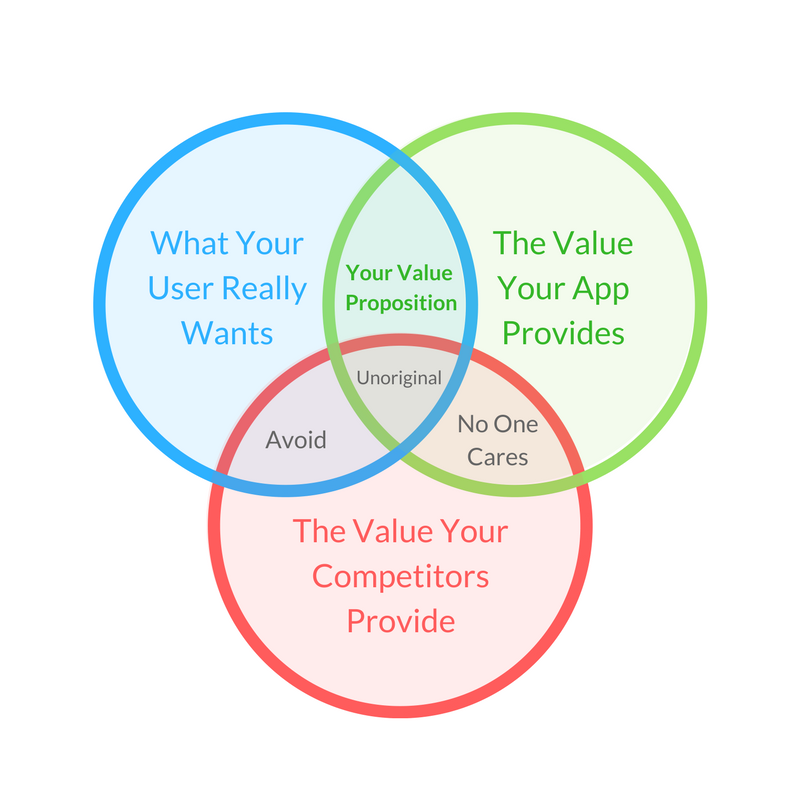
The above example is from Convert.com, for applications. But, you can quite easily see how beautiful this example fits to all products. The value proposition is the promise you give to your customers when they buy your products. Overall, it is the what your customers perceive as important and useful as it will solve a problem of theirs.
For a marketing manager to engage in insightful decision-making it is essential for a marketer to understand what the customer’s value is, and what value you can deliver what the competition is not already delivering.
4. Tool #2 – Six Step STP Process Model
Okay, so the 3 step STP process model was is a tool spoken about very vigorously by scholars. This is the whole process to understand your strategic positioning.
The idea with the STP process is segmenting your customer base so that you can define who to target, and then how to position yourself to the ideal customer you intend to target.
To do this you must first understand ties to understand the competitive landscape and the customer behaviours (This is done through the industrial analysis and market research). Once we have all the required information we need to segment the information and then assess which customers we aim to target. From this we analyse the industry and establish the ideal position which we will remain the most competitive.
The ideas of our position are formulated into a marketing mix.
Overall, by going through the above Six step STP model we will have highlighted what our customers truly value and the solution to that is better than the competition.
5. Tool #3 – Aims and Objectives
Every plan must have clear aims and objectives so that we have some kind of idea that our strategic position is working. The first thing to do when we start any strategic positioning is to set our aims and objectives.
5.1 Aims
When conducting the strategic direction the aims will usually be a quantitative number such as sales for each product. By having aims set you can measure whether the strategy is actually working, to then make adjustments and improvements for future decision making.
5.2 Objectives
The objectives focus more towards the products themselves, as it outlines how we reach those quantitative sales figures. Moreover, objectives should be set in terms of what products to sell in which markets.
Overall, your aims and objectives should be set in all areas of your business so that effective evaluations can be made.
6. Tool #4 – Ansof Model
The Ansof model us used to establish the best method for taking your products to market. Whereby, there are FOUR ways to do this depending on your situation. This includes: market development, diversification, marketing penetration and product development.
5.1 Ansof Model
- Marketing Development – This includes of taking existing products in existing markets, further known as market penetration of expansion.
- Diversification – Taking new products in existing markets, which is further known as product development.
- Marketing Penetration – Existing product in new market, which is known as market development.
- Product Development – New product into new market, or known as diversification.
7. Tool #5 – Value Proposition Evaluation Model
The tools evaluates the most effective positioning that is able to deliver the right value to the customer and in coherence with the organisations capabilities.
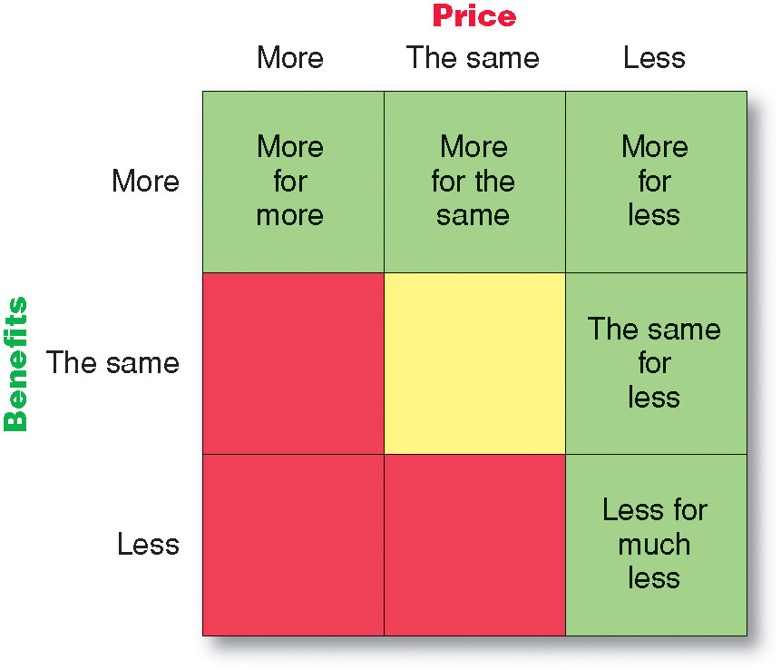
This tool assesses how effective value propositions are predicted to be. Whereby, it filters out those value propositions and least effective (highlighted in red).
7.1 More-for-more
This is being a more upscale version of the product or service.
Simply put it is adding more features to a product or service and charging more to cover the costs.
Mercedes vehicles, Rolex and Sub-zero appliances offer a stack of benefits.
Each of these companies is superior in their industry from offering the highest quality, durability, style and performance. This is all for a much higher price than the industry standard.
In addition, by paying high cost for the best gives the customer the prestige of them having, or evening being the best in some cases.
In terms of trying to scale a business this is the approach to take. Nevertheless, this can better served over time.
We should collect data on the existing product and services as well as keeping an eye on the most recent technological advances and learn for extra features or additional products we could sell alongside the current product.
7.2 More-for-the-same
This is a very aggressive positioning strategy as you are adding new features to your product and service for no extra charge to the customer.
This requires very clever management by cutting the cost of production, or even sacrificing profit to gain momentum in the industry.
However, Lexus is a good example of offering more for the same approach with no extra production cost.
Lexus trained staff and deal with customer care better than its direct competitor (such as, Mercedes).
They were offering more, by offering a better customer experience but selling the same product as Mercedes.
They also, took a very aggressive approach in their marketing campaign by comparing their offering alongside Mercedes outlining the extra value making them better than their competitor.
7.3 The-same-for-less
This is most commonly seen in supermarkets and it positioning you as the cheaper option.
This is also a very aggressive approach as it can result into price wars, which will eat up your profit margin being the least profitable.
A fine example of Tesco beating Sainsbury’s £3.00 meal deals. They have differentiated their meal deals by offering more variety of foods with their meal deals, whilst Sainsbury’s meal deals are the low-end sandwiches.
Tesco includes a bigger variety, thus differentiating their previous same-for-less approach providing the high competitive advantage.
Pound land also is known for this. They sell all kind of branded items cheaper than the super markets. Such as their two bottles of Pepsi for £1.
In addition, AMD do this by making the same processing chips as INTEL.
7.4 Less-for-less
This includes stripping all those extra benefits out of the customer’s journey that do not add as much value.
Ryan air is a perfect example; they are able to offer the cheapest flight prices in the market because they got rid of every benefit; such as beverages, meals and roominess, besides the flight, itself.
Premium inn is another good example. As they do not offer any extra benefit that, the room it’s self-such as a swimming pool an attached restaurant or mint on the pillow.
7.5 Less-for-more
The winning value proposition offers more for less and it is by far the very hardest to achieve.
This is delivering the most benefits for the least price.
However, massive brands such as amazon were able to do this.
They were offering cheaper booking and other digital items including a secure website and payment method, with a return policy.
The bundle of benefits grew this small website into the biggest online retail store we seen today.
However, there is a problem amazon faced, they was making a loss for the first five years as their approach was not to make profit, but build a massive customer base and gain trust for the long term.
8. Tool #6 – Competitive Advantage Model
The key to superior performance is to gain and hold a competitive advantage in the market that you aim to serve.
8.1 Competitive Advantage Model
8.2 Differentiation
This an approach under which a firm aims to develop and market a product that is new in the industry.
Maybe, this product has new features. It could even be stripped of old features for more convenience.
Apple offers laptops to the market that do not have a CD drive, but they are thin and lighter to carry on the go.
As a result they will be unique than other products or services offered by competitors.
8.3 Cost-leadership
Cost leadership is an approach used to beat the competition solely on price.
When products are relatively similar in the market, the only way to stand out is by offering the cheapest cost.
This is especially true, if your business is competing against a high brand.
8.4 Differentiation Focus
It is an approach that a business takes to develop a unique product or service that are unique to target customers.
Apple also does this, with their tablets.
They will offer a differentiated product and brand it pink so it may appeal more to younger women.
8.5 Cost Focus
By having a cost focus, you are offering features or services that are more specific to a customer segment.
These costs can be low and high depending on the circumstances.
For example, Ryan air provides cheap flights. They are cost focused as they are targeting a group of people that travel light.
These people do not want to pay extra for meals or extra luggage. Ryan air can then strip these services out and so the cost of the flight is cheaper, result in the customers paying for a cheaper flight.
8.5 Choosing The Right Competitive Advantages
Once we discover potential differentiation outlined in the previous section we can then look to outline with differentiation are most meaningful for a competitive advantage.
We decide which differences to promote and to promote them.
Rooser Reeves states: a company should develop a unique selling proposition (USP) for each brand and stick with it.
This could be made of a single differentiation or just one differentiation.
However, a product must have those differentiation that provide enough value to outperform your competition – this bundle together to form a unique selling proposition.
If a product has, many differentiation it is easy to lose focus by promoting all of them.
Sometimes less is more, and we should speak about the most important differentiation when marketing our unique selling proposition (USP).
9. Tool #7 – Unique Selling Point
Overall, the differentiation will not usually be the main point of promotion.
The focus of the promotion is the unique selling point (USP).
Susan L. Reid wrote a concise, well-reasoned article defining the unique selling Proposition (USP). She gives a FIVE Step Process:
The types of differentiation must be:
- Important: the difference delivers high value to target buyers
- Distinctive: Competitors do not offer the difference
- Superior: it is a better way of how customers currently operate
- Communicable: is it visible and understandable by customers
- Preemptive: cannot be copied easily
- Affordable: buyer can afford to pay the increased costs
- Profitable: they can be implemented profitably
Each differentiation has to pass these tests or it is unwise to implement. There is research that demonstrates that businesses, which fail to meet all these criteria, have gone a failed in the market.
10. Tool #8 – Positioning Document
After, we have evaluated which strategic strategy we think is appropriate we will create a positioning document.
It will highlight the messages we provide to our target audiences.
The positioning document highlights the following:
- A Positioning statement
- Positioning messages for target audiences
- Positioning for target audience via their purchasing cycle
Remembering that there are three areas of a business that need positioning. These are the strategic positioning, the brand position and the product position, and cannot be positioned in isolation.
10.1 Positioning Statement
The value proposition states what the customer want, where the positioning statement says what we are giving the customer based on our organisation direction.
This evaluates the value proposition more specifically.
Once evaluated the value proposition with the strategic approach we have to create a positioning statement.
This is not always necessary because the value proposition has a contribution in this already.
However, it could provide some additional clarity when communicating the product or service to your team, once we have decided on our core strategy.
10.2 Positioning Messages for Target Audiences
When positioning the customer journey it has to follow the positioning rules of the Strategic position and brand position.
We position our product messaging to the needs of our target audiences.
10.3 Developing a position messages via their purchasing cycle
It is commonly known that brands such as apple tailor the messages they send out via social media to suite the target audiences of those channels for three reason:
- Objective for using the channel
- Location in the purchasing cycle
The objective for using the channel may not be product related. It could be brand related, such as building brand awareness.
Where people are in their purchasing journey, have different question. For example, if you have just heard about a business you will be asking, who are these people?
Later on, you will be asking how they can help you.
Potential customers do have different intent when operating different channels so if using the undifferentiated strategy it may still is worth having separate messages for those channels.
The positioning of the purchasing cycle is finding out what type of message is important to that customer against what stage they are at in their purchasing process.
11. Tool #9 – Customer Journey Pipeline
The customer journey is a term used to try to understand the road map customers take to learn about your brand and make a purchase.
There are different phases a customer has to go through before making a purchase and it is marketing role to understand which phase our customers are at.
These phases are called the pipeline and we leverage this by having a message to correlate which phase they are at in the pipeline.
This means that the message will address both the target segment and the phase of the pipeline.
11.1 Example of a Customer Journey Pipeline
- New leads are those customers that have first contact. This being the first time on your website or the first time they have step foot in your shop.
- Qualified leads are those people that have shown interest in your product by interacting with the website or any marketing event.
- Opportunities are those people who have reached out to the organisation either asking questions to understand how we can solve their problems.
- Won is after they make a purchase and outline re-targeting and customer relationship building activities.
12. Tool #10 – Polarising Affect
The polorising affect is a tool that you use to plan how you want to tap into the emotional state and rational state of your customers.

Whenever you have successful hit a niche that is working for you, it will naturally upset whole other group of customers. They will begin to evaluate why your product is not for them on a rational basis.
The biggest way to position your business so that it converts customers is by aiming at their emotional state of mind. So this is trying to hit the factors of Esteem, Play, Status and Spirituality.
Again, Apple is a good example of successful position on a emotional level and Samsung customers will always advise Apply customers that Samsung and cheaper and have a higher performance.
Conclusion
By establishing how competitors align to the target segment attributes, gaps emerge.
Tracy (2017, minutes 3.41) states: “no strategy can be independent of the enemy”.
The value proposition will exploit the gap describing what is important to our customers.
After we make our business strategy, we establish a message that is clear, consistent, credible and differential to the target audience.
By carefully balancing between the segment, competition and the customer journey we will break through the noise of the competition.

